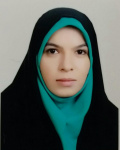| نویسندگان | Jahanishakib Fatemeh,seyyede tayebe hosseini,Zahra asadolahi |
|---|
| همایش | چهارمین کنفرانس بینالمللی و هفتمین کنفرانس ملی صیانت از منابع طبیعی و محیط زیست |
|---|
| تاریخ برگزاری همایش | 2023-11-22 |
|---|
| محل برگزاری همایش | اردبیل |
|---|
| شماره صفحات | 0-0 |
|---|
| نوع ارائه | پوستر |
|---|
| سطح همایش | داخلی |
|---|
چکیده مقاله
Land use changes, particularly deforestation, have an impact on carbon stocks. According to the report of the Intergovernmental Panel on Climate Change (IPCC), 24% of the total global greenhouse gas emissions are caused by land use changes, particularly deforestation. In the absence of potential mitigation and land adaptation policies, climate change can impact ecosystem services. Therefore, reducing greenhouse gas emissions associated with land use is a crucial strategy for mitigating climate change. The REDD (Reducing Emissions from Deforestation and forest Degradation) program is a stimulus aimed at reducing deforestation and greenhouse gas emissions in developing countries. It involves identifying the rate of deforestation, predicting future forest degradation, and designing effective measures to reduce deforestation and greenhouse gas emissions. Finally, there are benefits from the financial rewards of these actions. In line with the implementation of REDD projects, any significant factors contributing to forest cover degradation in the project implementation area will be prevented. The REDD project involves implementing incentive approaches to encourage farmers to prevent forest degradation and mitigate the effects of climate change. The Zagros biome, which spans across 11 provinces of Iran, is home to approximately one third of the country's population and encompasses 40% of its forested area, equivalent to five million hectares. Despite being one of the most important and vital areas of Iran in terms of providing multiple ecosystem services, this biome is unfortunately not managed in a way that is compatible with the principles of sustainable development, leading to its degradation. So, this biome is experiencing an increase in human needs, such as changes in land use and agricultural expansion, increased livestock grazing, and fuel supply. As a result, significant changes have been observed in the provision of ecosystem services. According to the fact that Iran was among the top 10 countries in greenhouse gas emissions in 2015, and considering the implementation of regulations by the Supreme Environment Council and the sixth development plan, which focus on establishing a low-carbon economy system, it is necessary to assess the feasibility of implementing the REDD project in Iran. Presenting new strategies to prevent deforestation and forest degradation, as well as to reduce greenhouse gas emissions, particularly CO2, is one of the main objectives of this project. Middle Zagros vegetation area meets the necessary criteria for the implementation of REDD projects. It is experiencing severe land use changes, threats to biodiversity, and has high carbon reserves. Additionally, it provides multiple ecosystem services. Considering the undeniable role of the Zagros forests in mitigating climate change in the western part of the country, it is expected that the implementation of the REDD project will be considered as a management solution to address the adverse effects of climate change.
لینک ثابت مقاله

